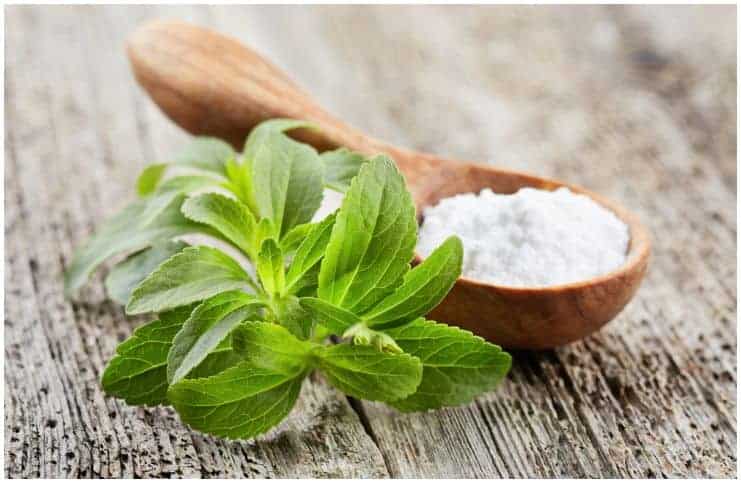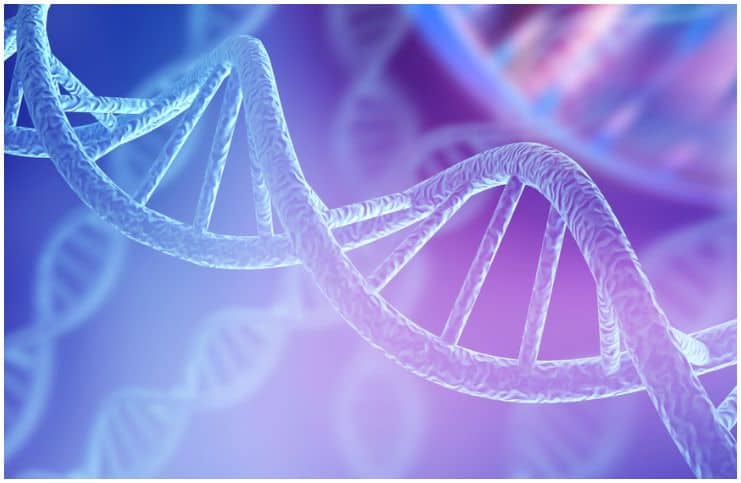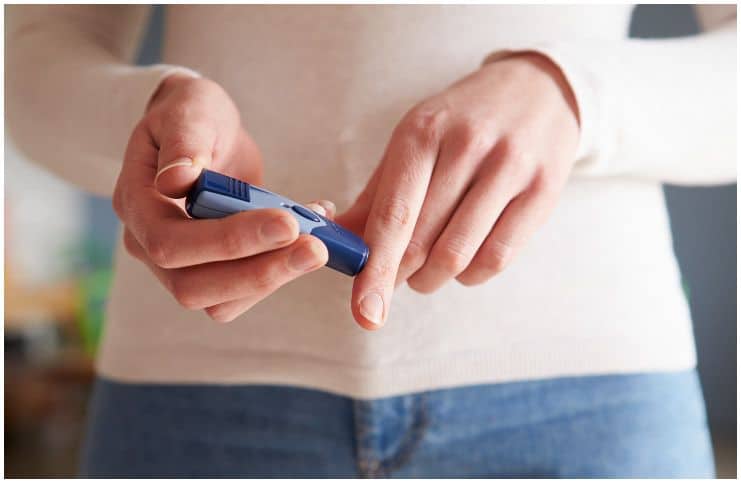Stevia (Sweetener) – Side Effects & Health Benefits:
Interesting Facts
It is a herb from the Asteraceae family (also called Compositae) that grows in tropical and sub-tropical America (mostly Central and South). The plant grows 2-4 feet in height with slim, branched stems and thrives in temperate and some tropical regions.
Native to Paraguay, it is presently found in countries such as Korea, Brazil, Japan, and China (it is the world’s largest exporter of stevioside products).
There are over 150 species, but only one stands out due to its magnificent properties as a sweetener, namely Stevia rebaudiana.
Benefits
In its original form, this herb was marketed as a powder. Although it is very sweet (up to 200 times sweeter than refined sugar), it still leaves a bitter flavor, due to a compound called rebaudioside A, essentially the sweetest aromatic compound of the S. rebaudiana leaf.
Additionally, this substance doesn’t leave a bitter taste. Major producers decided that both stevioside and rebaudioside A become part of the artificial sweeteners based on this herb, such as to maintain a balance.
Although it is a plant before it hits the stores’ shelves as a sweetener, it goes through many manufacturing processes (40-step patented process), being added other compounds such as erythritol (a food additive), “natural flavors” and dextrose – a fast absorbing simple carbohydrate, with a high glycemic index which is usually extracted from wheat, maize or rice.
FDA Ban
Although it was already accepted almost unanimously around the world, the plant was banned at some point in time in the United States (in 1991 by the FDA) under a preliminary study that incriminated the sweetener as cancer-causing or at least high risk in this regard.
The FDA’s stated reason was that “toxicological information on stevia is inadequate to demonstrate its safety.”
But in 1995, the restriction of its marketing in the United States stores was lifted, after another study which recommended that the herb itself should no longer be categorized as a natural sweetener but as an artificial and safe one.
Then, in December 2008, the FDA accepted this sweetener as “GRAS” (Generally Recognized as Safe), and since then, it has been found as an artificial sweetener in almost all United States food stores.
In 2012, the FDA posted a note on its website regarding crude plants:
”FDA has not permitted the use of whole-leaf S. rebaudiana or crude S. rebaudiana extracts because these compounds have not been approved for use as a food additive.
FDA does not consider their use in food to be GRAS in light of reports in the literature that raise concerns about the use of these compounds. Among these concerns are control of blood sugar and side effects on the reproductive, cardiovascular, and renal systems.”
As far as the major American producers are concerned, it took them a few years to find the right formula to implement the sweetener to commercial products, and now it is found in chewing gums, soft drinks, wines, yogurts, candies, cooking and/or baking products.
In other countries, such as Japan, where artificial sweeteners were banned more than 40 years ago, this plant has passed the “test”, but only after more than 40,000 clinical trials. Nevertheless, there aren’t enough studies on the long-term effects of the “miracle sweetener” and it is still suspected to be causing complications, especially if used in large quantities by the domestic consumer.
Many names, same product
This sweetener is sold under so many names that it would be difficult to identify them all, but you should know that currently famous soft drinks around the world already use this herb under the name: “PureVia,” “Truvia,” and “SweetLeaf.” More than 5,000 beverage and food products currently use this artificial sweetener.
So, if you have the curiosity to read the composition of these popular products, but don’t recognize the names, know that it is essentially the same, with small differences in reports of rebaudioside and stevioside, but still the same plant. It is best to read the label next time, but don’t get alarmed. In any case, if you order any low-calorie soft drink, surely you will find processed stevia in it as well.
Side Effects of Stevia
Genetic Mutations
Some professional long-term studies confirmed that this herb can have side effects on broad consumer’s health, namely the degree of cancer risk.
The study was conducted by a group of toxicologists from the University of California, Los Angeles, namely on the nutritionists’ demand from the Center for Science in the Public Interest.
Additionally, the authors (Sarah Kobylewski and Curtis D. Eckhert) concluded that the stevioside, not rebaudioside A, can cause chromosomal damage, genetic mutations, and DNA breakages.
They think that these changes could contribute to the malignancy of diseases such as cancer, although no one has studied exactly whether or not these substances can cause cancer in animal patterns. (1)
Type 2 Diabetes and Obesity
A study from the Weizmann Institute of Science concluded that artificial sweeteners may have detrimental effects on our bodies that lead to an increased risk for diabetes and obesity (the very ailments that many diet soda drinkers are hoping to avoid). (2)
Fertility
A 1999 study by the Departamento de Biologia, Universidade de Sao Paulo, Brazil, trying to discover the fertility effects of chronic administration (2 months) of this plant extract, found that it could affect hormones because of its glycosides having a comparable structure to plant hormones like gibberellin. (3)
“..chronic administration of an S. rebaudiana aqueous extract produced a decrease in a final weight of testis, seminal vesicle, and cauda epididymidis. In addition, the fructose content of the accessory sex glands and the epididymal sperm concentration are decreased.”
They also concluded – ”the treatment tended to decrease the plasma testosterone level, probably by a putative affinity of glycosides of extract for a certain androgen receptor, and no alteration occurred in luteinizing hormone level. These data are consistent with the possibility that the plant extracts may decrease the fertility of male rats.”
In 1968, Professor Joseph Kuc performed a study to evaluate any contraceptive properties of the herb. The results? Joseph Kuc established a visible and relatively long-term reduction in the number of offspring born to female rats he fed with an S.rebaudiana solution:
”A water decoction of the plant S. rebaudiana Bertoni reduces fertility in adult female rats of proven fertility. The decoction continues to decrease fertility for at least 50 to 60 days after intake is stopped.” (4)
Conclusion
Whereas the natural herb stevia can be safely used as a healthy sugar substitute, the processed form should be avoided.
READ THIS NEXT:
Reasons Why Vegans Are Better at Sex


